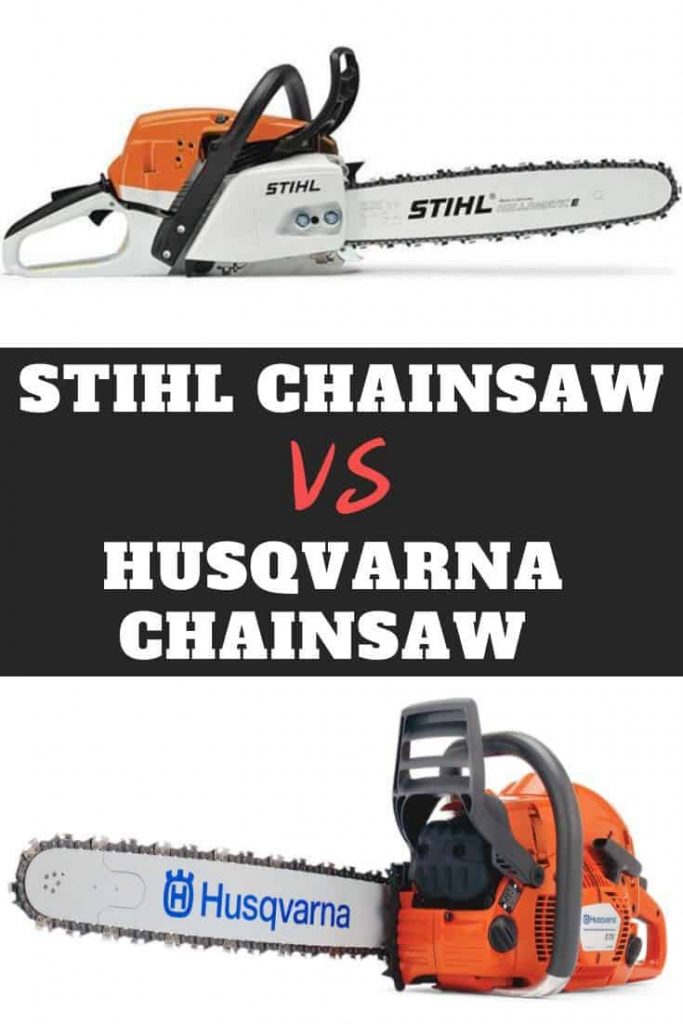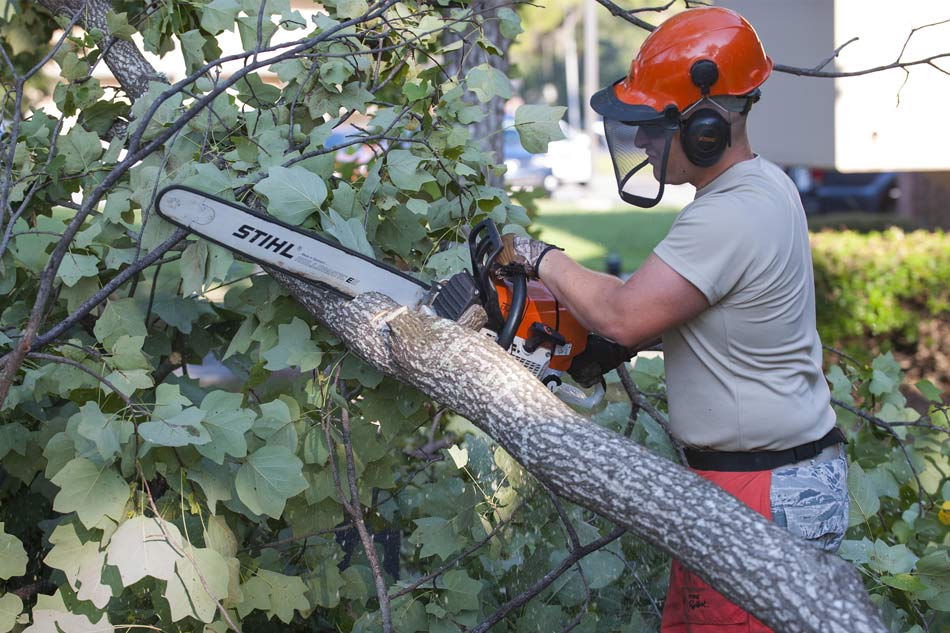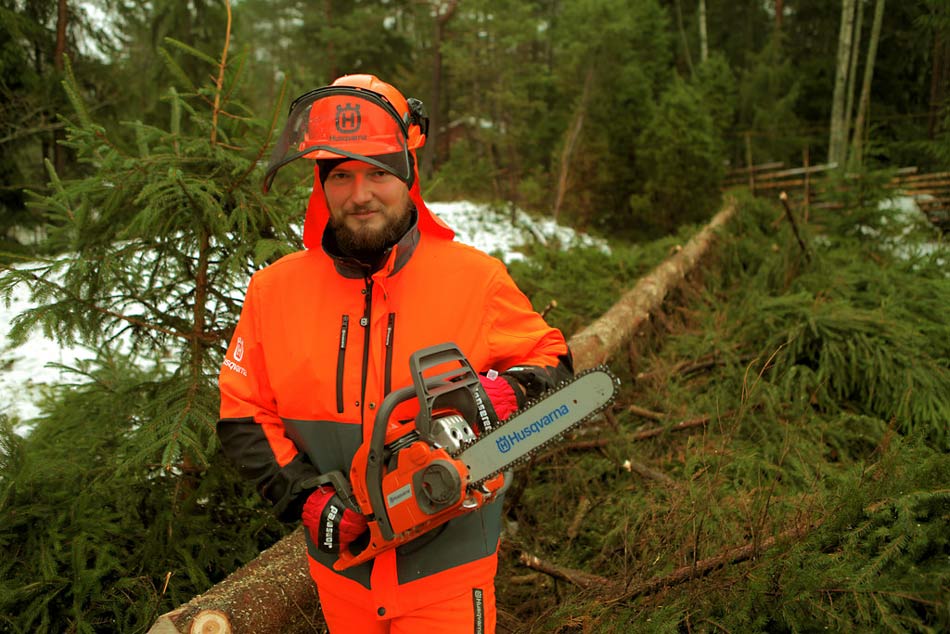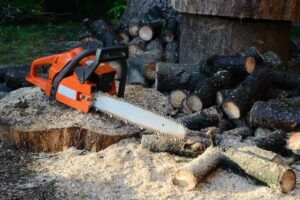
Have you ever been faced with a near-impossible decision? If yes, then you are not alone. Well, professional loggers, arborists, and homeowners face tons of these decisions every day. Top of these decisions is when one has to decide between two high-quality power tools.
An unending debate has always existed between wood professionals and enthusiasts alike. The Stihl vs Husqvarna chainsaws is one that will not end anytime soon. Each of these two chainsaws has a fair share of both fans and haters due to their immense popularity.
To tell you the truth, these opinions are always a matter of perception and subjective views. Each chainsaw performs exceptionally well, depending on the skills level of the operator. To put things into perspective, lets us make a detailed comparison between these models.
We hope that we will be able to tell if there exist any significant differences in performance at the end of this article. This interesting showdown is one you don’t want to miss out on.
Stihl vs Husqvarna Chainsaw Comparison
These designs of chainsaws usually have two potential consumers in mind: professionals and DIY home users.
For those already familiar with chainsaw market dynamics, you are probably aware that professional chainsaws are more powerful than those for light-duty homeowners.
Homeowner chainsaws feature shorter bars, less powerful engines as well as crankcases made of plastic meant to reduce weight. On the other hand, professional chainsaws have longer bars and more powerful engines than their counterparts to tackle intense logging and forestry work.
Usually, it is these features that set chainsaw products apart. So, in this Stihl vs Husqvarna debate, we will look at the features of these two, and compare how they compete against one another.

History of Production
- Stihl Chainsaws
Stihl (read as steel) chainsaws are manufactured by the Andreas Stihl AG & Company KG group of companies. This company was founded by Andreas Stihl back in 1926. He is regarded as the father of the Stihl Chainsaws.
With its headquarters in Waiblingen Germany, the company produces a host of power tools. These include forestry machinery, agricultural equipment, gardening tool, and an array of other tools meant to make the outdoors more appealing.
Today, the company has a huge market share throughout the globe, with its United States’ headquarter being in Virginia Beach, Virginia. The company has put in place safety lines for ensuring that all pieces of equipment perform as per safety and protection standards.
- Husqvarna Chainsaws
On their part, Husqvarna chainsaws are manufactured by the Husqvarna Group of companies. This company is a Swedish producer of outdoor power tools such as trimmers, cultivators, brush cutters, mowers, garden tractors, and sewing machines.
It has its headquarters in Stockholm, Sweden. As a multinational company, it produces high-quality gardening and forestry equipment with a universal reputation for quality. Over the 325 years, it has been in existence, the product lines have changed quite drastically.
In the 1680s, the company used to produce rifles, then turned to bicycles and motorcycles in the 1890s, and then power tools during the 20th century.
While the Stihl group of companies is mostly recognized for their chainsaws, their Husqvarna counterparts produce a lot more products hence not known for any specific chainsaws.
Types of Chainsaws
Of the two companies, the two most popular types of chainsaws are electric and gas-powered chainsaws. The decision between these two depends on the task you have at hand and the level of convenience a consumer expects.
Chainsaw product lines range from light-duty chainsaws for occasional pruning work to heavy-duty products for large-scale logging and forest harvesting.

- Gas Powered Chainsaws
Ask anyone around, and they will probably tell you that these are the most powerful chainsaws around. Most of these tools are professional grade to deliver maximum torque for tackling hardwood and stubborn branches.
If you do heavy duty logging work, then these are the chainsaws for you. Their engines come in a variety of 2 and 4cyle engines. The former requires an oil-fuel mixture for combustion and lubrication of the internal parts.
For their immense power, you will have to sacrifice on weight and ease of use. The longer bars on them and heavy engines make them difficult to control by novices. There is also the requirement for regular maintenance for efficient running at all times.
And if you are a carbon emissions emissary, these might not be the products for you. They are loud and emit smoke as they run.
For those looking for the gas-powered chainsaws for moderate use from these two companies, then we think you have two choices. You would have to decide between the Stihl MS 251 vs the Husqvarna 450.
Both options are fitted with 18” bars for tackling most of the tasks at home. The Stihl model beats the Husqvarna in terms of versatility since it can accommodate bars from 14 to 18 inches.
However, the Husqvarna has a more powerful 50.22 cc engine in comparison to the 45.2 cc on the Stihl. Thanks to LowVib technology, it also results in lesser vibrations than the Stihl.
For those who want more power and torque for professional work, we think the Husqvarna 460 Rancher and the Stihl MS 290 would work best for you. The latter has a 56.5 cc, 3.62 HP engine, while the former comes in a 60 cc engine.
- Electric Chainsaws
These are the other alternative to gas-powered chainsaws. They use electricity instead of gasoline for a reduced need for maintenance, no emissions, and reduced noise levels. There are generally two types: corded and battery-powered.
The difference is a simple power cord that supplies electric power for driving the motor in a corded chainsaw. A battery-powered model, on the other hand, has a rechargeable battery for increased convenience.
Corded ones are the more powerful options but are limited in terms of range and depend on constant electricity. Battery-powered models are light duty; batteries run out after a while but are more portable.
If you are an environmental conservationist, then these would be a great choice for light duty works as compared to gas-powered chainsaws. Performance-wise, gasoline chainsaws out rightly out-power these types.
Stihl battery powered chainsaws include the MSA 120 C-BQ, MSA 140 C-BQ, MSA 160 C-BQ, etc. For corded chainsaws, there are the MSE 141 C-Q and the MSE 170 C-BQ. Husqvarna produces the 120i, 136Li, 536Li XP among others as their battery-powered chainsaws.

Tank Sizes
It may not be apparent until you start using the chainsaw, but the size of a chainsaw tank plays a key role. Nothing annoys like having to stop repeatedly to refuel your chainsaw, more so when you intend on working for long hours.
And since mixing oil and fuel is no one’s cup of tea, you would always prefer a bigger engine capacity to carry you through. Nonetheless, a big fuel tank is a double-edged sword. More fuel means an increased weight that you will have to bear.
On fuel tank size, there seems to be a consensus that the Husqvarna chainsaws have a smaller tank. While you will be refueling quite often, the design considerably keeps down the weight. Commercial, industrial grade Stihl chainsaws have bigger fuel tanks for fewer work interruptions.
Chainsaw Prices
Although the Stihl chainsaws are thought to be heavier and handier, they are relatively cheaper than Husqvarna chainsaws. The main reason for this difference in pricing is that the latter chainsaws are more prominent, hence attract higher prices than their counterparts.
In as much as you can find chainsaw models cheaper than the Stihl ones, it would be hard to find one that performs better within that price range.
Terms Of Performance
This is definitely one aspect that you would find a near split in opinions among the users of these chainsaws. Pro Husqvarna enthusiasts insist that these types have faster speeds, whereas pro-Stihl diehards stand their ground that their brand offers better torque.
There is no clear winner in this category as both chainsaws are manufactured to achieve this exact feat. We have tested both brands of almost similar engine capacities, fitted the same bar size and chain, and an almost similar power rating.
In the end, there were no quantifiable differences regarding performance. It all boils down to a matter of preference.
As we have already mentioned, from popular opinion, Husqvarna has faster-cutting speeds. Nevertheless, Stihl chainsaws have a low-end torque, which is an asset when cutting through large-diameter hardwood trees.
Whichever the case, both chainsaws are insanely great. It’s like we are splitting hairs to determine any potential difference between the two.
Handling And Ergonomics Of Design
For those who have ever used a power saw before, you understand just how it is excellent to operate an ergonomically designed tool. Proper handling does not only ensure safety but also accuracy when curving wood.
Both models feature a vibration reduction mechanism for minimizing the impacts of the engine vibrations. Hand-Arm Vibration Syndrome is something every chainsaw professional should be wary of.
The Stihl chainsaws are fitted with an Anti-Vibration Systems, while Husqvarna has LowVib systems. Therefore, you can trust these brands for lesser vibration impacts.
Have you realized that almost all chainsaws are made for right-handed individuals? Well, it may be inconvenienced for a couple of users, but you get used to it in a short while. These chainsaws both have models with rear and top handles and in some cases both sets.
For a top handle chainsaw, your right-hand work the accelerator while your left-hand grabs the handle. If you need a specialized chainsaw, then the rear handle works best. It exists in pole saws from the two manufacturers.
From experience, the Husqvarna models outperform Stihl chainsaws when it comes to handling matters. The grip is better, and the handle has a 7 degrees offset to minimize fatigue.

Chainsaw Safety
Just as a chainsaw eases your logging, it could as well turn out to be one of the most hazardous tools around. That said, ICDC reports that almost 36,000 chainsaw accidents are reported yearly, with 6,000 cases of upper body and head injuries. Other injuries occur on the arms, leg, and hand.
With this in mind, you would always want to be on the safer side when using a chainsaw. The good news is that both models emphasize operator security.
Stihl fits their chainsaws with Quickstop Plus Q and a braking feature with the option of manual activation. This extra braking feature is activated when you release the rear handle and is not in all of the models.
Other models have the Quickstop alongside a chain catcher that acts in the event of strong kickbacks.
Husqvarna models have a kickback guard as well as a chain catcher. It is a mechanism that only comes into play when you toggle the throttle lock. Since Stihl models have an extra safety feature, they win in this category ahead of Husqvarna.
This notwithstanding, your safety starts with you. All these mechanisms are not made to be 100% safe. Before setting out to use a chainsaw, ensure you have the right protective gear as chainsaw chaps, gloves, helmet. Also, watch out for kickbacks.
Terms Of Durability
You might buy the best performing, fuel-efficient and safest chainsaw around, but if it does not last you for years, then your purchase would have been in vain.
And since Stihl and Husqvarna chainsaws are quite expensive, durability is one aspect you want to give lots of considerations.
Stihl and Husqvarna are two of the leading chainsaws today. They don’t achieve this feat by their excellence only. We commend both brands for their high quality and durable construction. If you were expecting a clear winner, then we’re sorry, there isn’t one.
They have a long-lasting reputation for lasting for decades. Since Husqvarna has been on the market longer, it tends to be viewed as the most durable. We think the Stihl ones fare decently well too.
You must also recognize that there is more to a chainsaws durability that brand reputation. How you maintain your chainsaw determines whether it will last for a month or a decade.
Look at it this way, a chainsaw and your car engine bear the same resemblance. Keeping them in top shape guarantees long-lasting performance while keeping running costs down.
Both Stihl and Husqvarna have features meant to prolong their life spans. Whether it’s an easy to access chain tensioner or an automatic oiler, they have all these. The workings may be different, but these features achieve the same thing.
To further make maintaining your gas-powered engines easy, both brands have two-thronged air filters to optimize engine performance. A Stihl chainsaw has a Pre-separation air filtration to remove large debris before reaching the actual filter.
The Husqvarna has a centrifugal air-cleaning system that does the same task.
Cut Quality
Certain jobs necessitate an exemplary cut quality in the wood. In this category, there is another tie. Both offer great efficiency when cutting dues to their tuned performance engines.
Husqvarna’s X-Torq technology makes it an efficient power tool. The Stihl variants compensate by being able to run for prolonged periods of time non-stop. It makes it possible to make precise cuts without feeling fatigued.
Chainsaw Features
The difference between Stihl and Husqvarna becomes apparent in the features in each chainsaw. Stihl chainsaws have a fuel injection system in their hand-held or portable chainsaws.
On the other hand, Husqvarna chainsaws have an air injection system which facilitates the removal of the generated sawdust from the engine’s filtration system.
Easier starting is made possible by the inclusion of Easy2Start technology in Stihl chainsaws while the Husqvarna has a Quick starting feature for accelerating starting speeds.
Now to the common features, you get a chain brake, bar-tip guard, kickback-reduction bar and chain. There are also automatic chain oilers, trigger knockouts, and anti-vibration features.
Stihl vs Husqvarna – Final Verdict
Now that we have taken you through the big boy chainsaw comparison, which one do you think wins the Stihl vs Husqvarna Chainsaw debate? Frankly speaking, this debate has never produced any definite answer.
Passing an objective judgment is impossible as both chainsaws have exceptional performances in all their categories. Deciding between either is mostly a matter of preference, as each can easily replace the other.
The only concern about Stihl chainsaws is the difficulty of finding one. While you can easily buy the top range Husqvarna from the comfort of your living room, the same cannot be said of Stihl chainsaws. Only a limited number of models are available online within certain countries.
There is also a requirement for Stihl buyers to undergo some training before buying the chainsaw. This is advantageous in that it ensures every operator handles the powerful tool in the right way, but not for experienced chainsaw users.
Efficiency-wise, the Husqvarna with its revolutionary X-Torq technology ensures it uses less fuel. The Stihl products could do with such, but they still perform well in regards to fuel consumption.
What is important for you should not be trying to know the better brand between the two, but rather knowing which one works best for you. You could even be like us: own the two favorite models from the brands. That sounds like a win-win situation, right?
All in all, make sure the tool you buy is the right one for the intended job. You should also be competent enough to handle the tool. Don’t buy a 24”bar, 60 cc chainsaw if you are still a novice. Look for something easier to handle and leave the big punch to the professionals.






![9 Best Pole Saws of 2023 [Ultimate Guide] 9 Best Pole Saws of 2023 [Ultimate Guide]](https://handykeen.b-cdn.net/wp-content/uploads/2021/03/best-pole-saw-300x200.jpg)